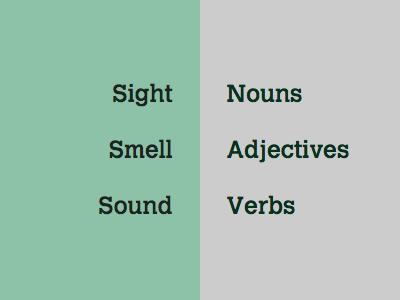
So perhaps we can look at it like this: Sight abstracts things, lets us give things names by looking at the surfaces. When we smell, we’re perceiving the underlying probability of descriptions of things—smell is a sense of adjectives. Hearing is the sense of what is happening. We’re listening to action.
- sight~nouns
- smell~adjectives
- hearing~verbs
But the key bit about hearing, I think, it what sounds are and how hearing works. All this information about activity is added together, overlapping, on top of itself, and it comes in a continuous stream down our ears. There is no big matrix, like in our eyes. Our ears have a million mechanical moving parts that divide the continuous stream into frequencies, and much more computational analysis before we even reach the auditory centres of the cortex.
Hearing is rhythm analysis. Hearing looks for regularities and bundles them up into tones and noises so we can hear past them into the more unusual activities.